Abstract
Metabolic balance studies were carried out in normal dogs to define the renal mechanisms responsible for the adaptation to, and recovery from, chronic hypocapnia. A chronic reduction in arterial CO2 tension (PaCO2) of some 15 mm Hg was achieved by means of chronic exposure of the animals to 9% oxygen in an environmental chamber. The development of hypocapnia was associated with a marked suppression of net acid excretion which, together with a slight accumulation of organic acids, produced a reduction in plasma bicarbonate concentration (8 mEq/liter) that led to nearly full protection of extracellular pH (ΔH+ = - 2.5 nmoles/liter). When PaCO2 was returned to control levels, an augmentation of acid excretion restored plasma composition to normal after a brief period of “posthypocapneic metabolic acidosis.”
The changes in renal acid excretion during both adaptation and recovery were accomplished in a fashion notably different from that previously observed in chronic hypercapnia, being linked to changes in cation rather than chloride excretion. Thus, in dogs ingesting a normal NaCl diet, suppression of hydrogen ion excretion during adaptation to hypocapnia was associated with an increased excretion of sodium rather than with a retention of chloride. The fact that this loss of sodium occurred without a concomitant loss of potassium strongly suggests that the hypocapneic state specifically depressed distal sodium reabsorption; if distal sodium reabsorption had not been depressed, a reduction in proximal sodium reabsorption or a diminution in distal hydrogen ion secretion (or both) should have produced an increase in potassium excretion.
The interpretation that chronic hypocapnia diminished sodium reabsorption was supported by the finding that when renal sodium avidity was enhanced by restriction of sodium intake, acid retention was accomplished by a loss of potassium rather than of sodium. The accompanying reduction in plasma bicarbonate concentration was slightly less than that observed in dogs ingesting a normal NaCl diet, a finding probably accounted for by a slight difference in the availability of cation for excretion under the two experimental circumstances. These findings, taken together with the observation that augmented acid excretion during recovery from hypocapnia is linked to cation retention, suggest that an adequate intake of cation during both adaptation and recovery from chronic hypocapnia may be critical to the physiologic regulation of acid-base equilibrium.
Full text
PDF
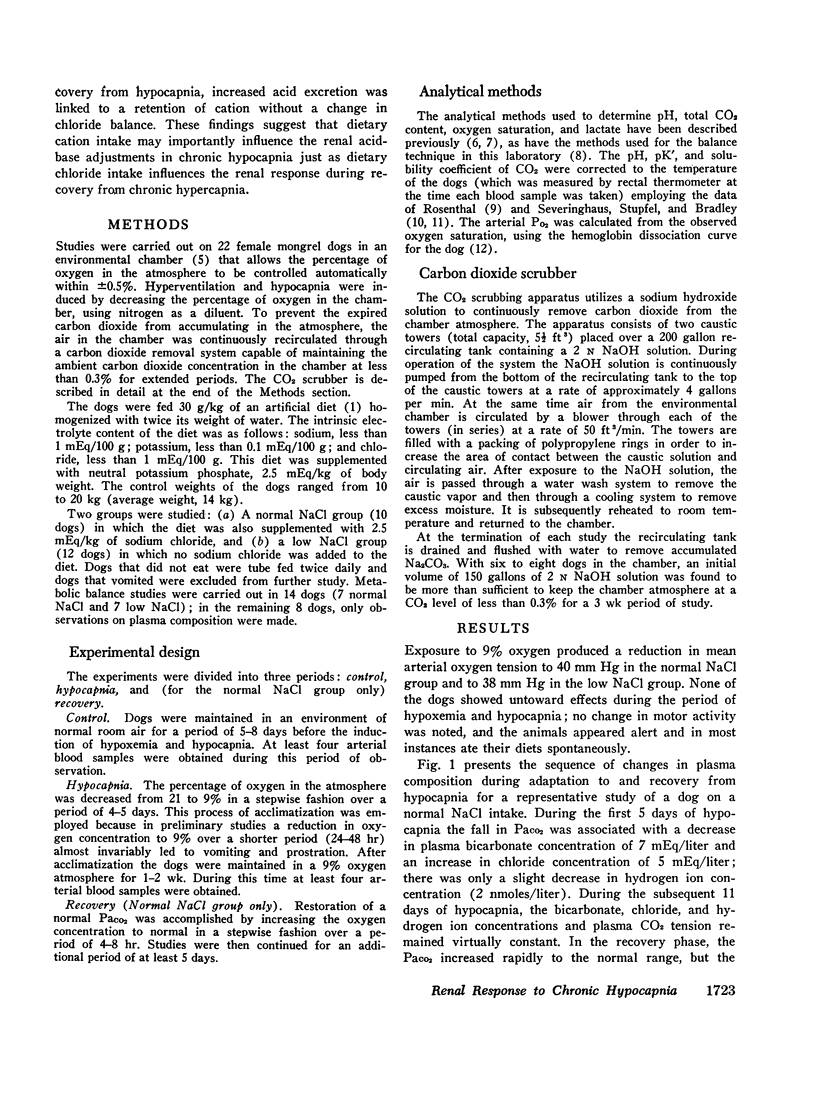

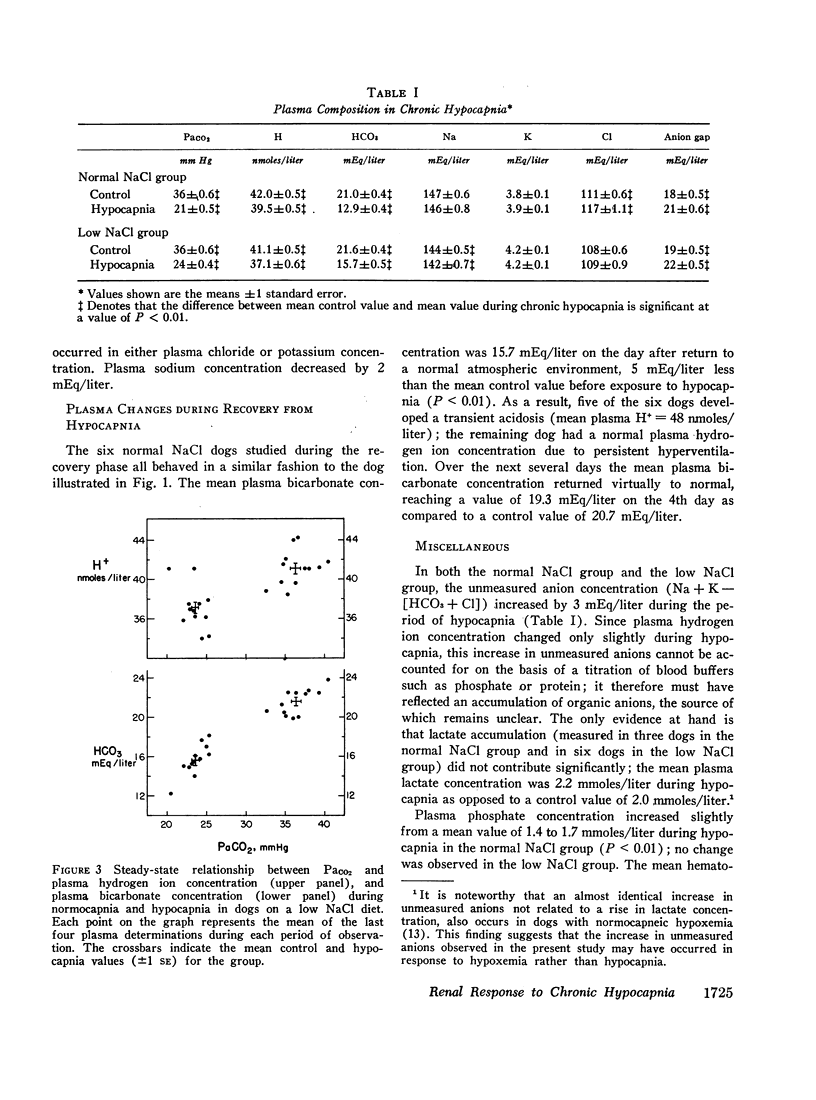
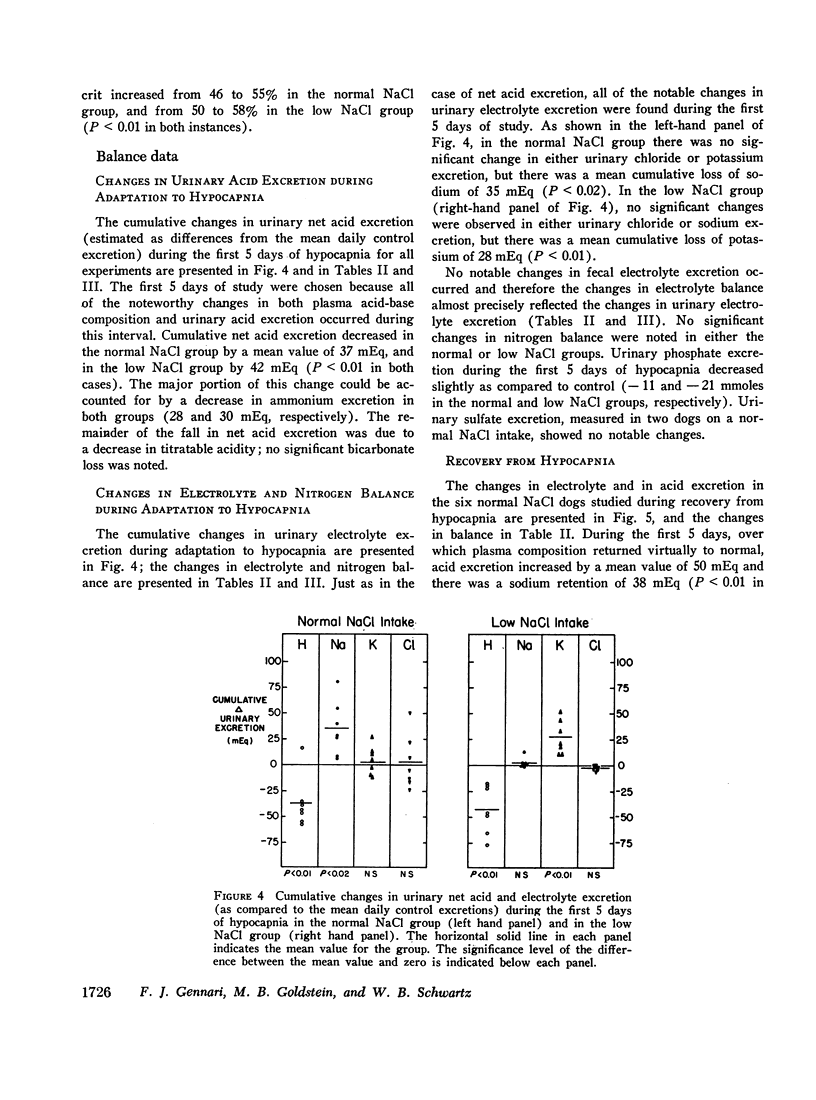
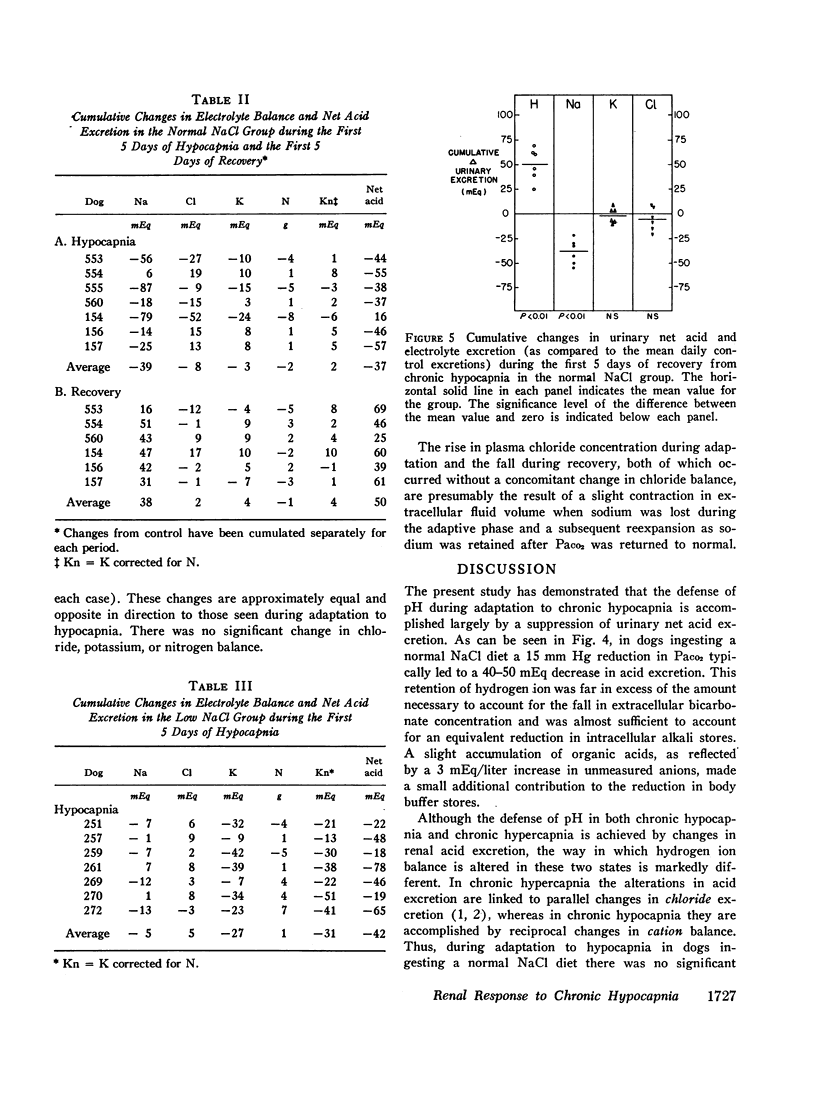
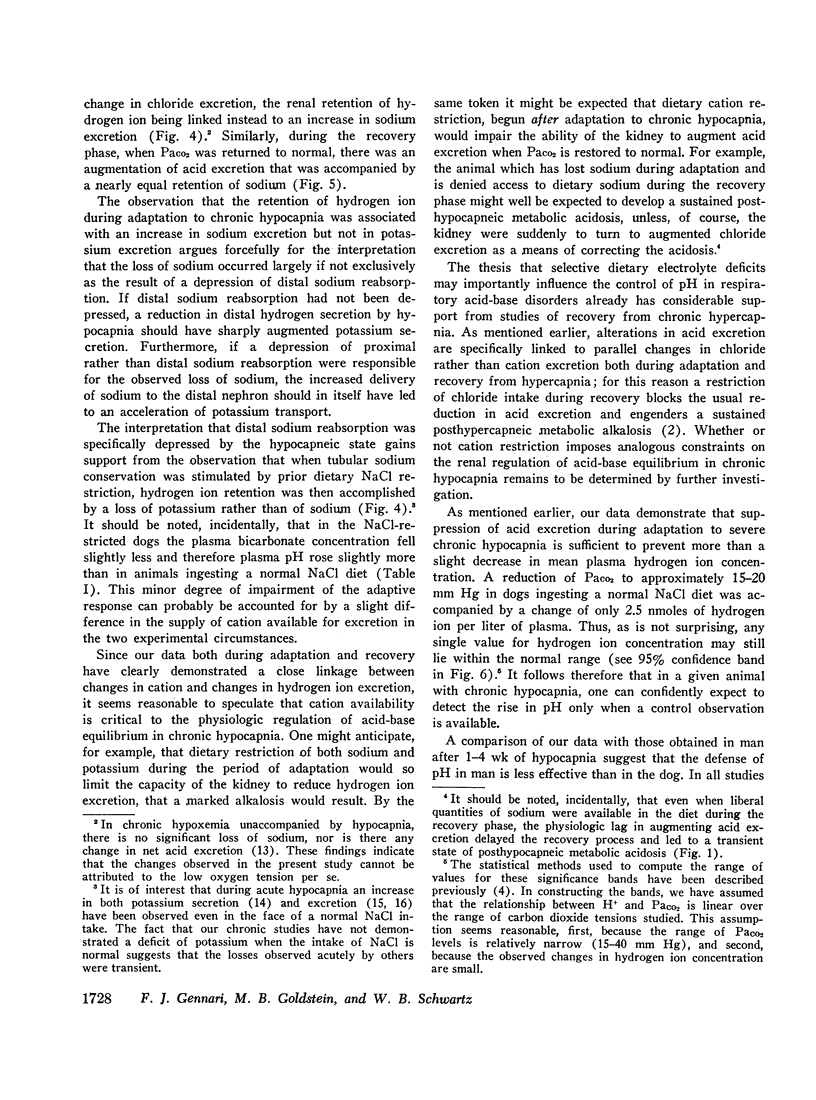

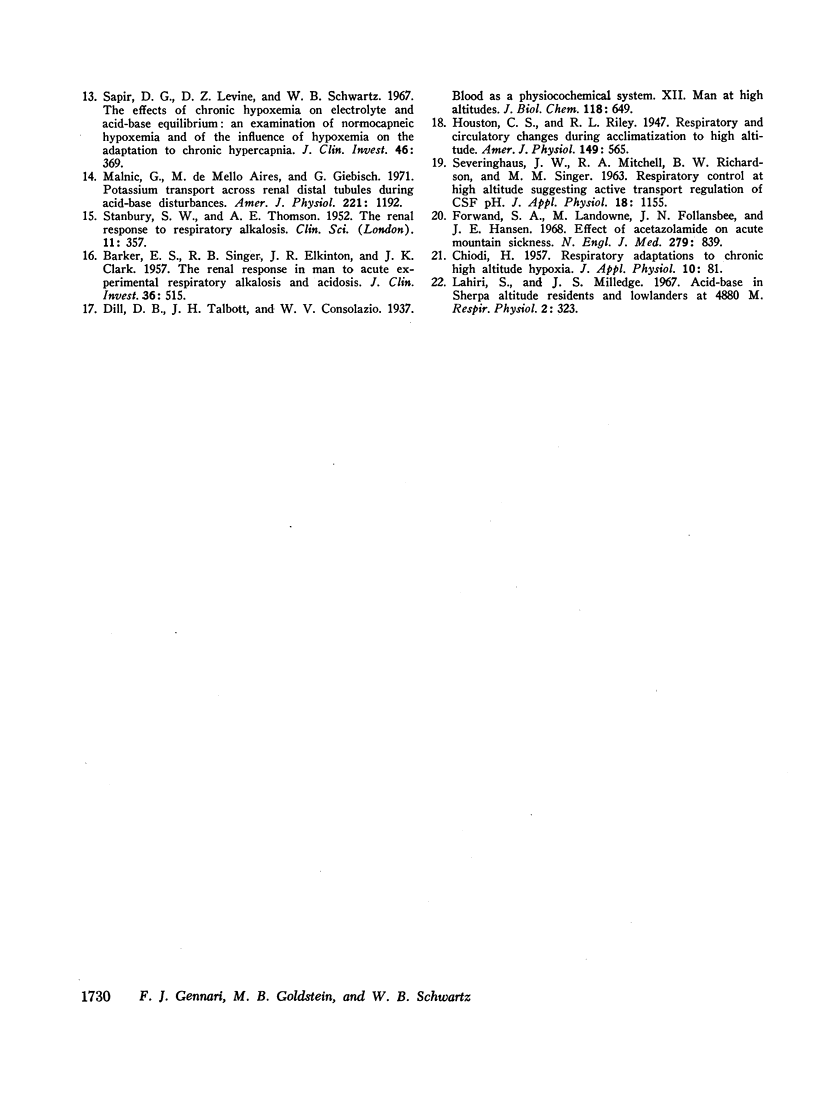
Selected References
These references are in PubMed. This may not be the complete list of references from this article.
- Arbus G. S., Herbert L. A., Levesque P. R., Etsten B. E., Schwartz W. B. Characterization and clinical application of the "significance band" for acute respiratory alkalosis. N Engl J Med. 1969 Jan 16;280(3):117–123. doi: 10.1056/NEJM196901162800301. [DOI] [PubMed] [Google Scholar]
- BARKER E. S., SINGER R. B., ELKINTON J. R., CLARK J. K. The renal response in man to acute experimental respiratory alkalosis and acidosis. J Clin Invest. 1957 Apr;36(4):515–529. doi: 10.1172/JCI103449. [DOI] [PMC free article] [PubMed] [Google Scholar]
- BRADLEY A. F., SEVERINGHAUS J. W., STUPFEL M. Accuracy of blood pH and PCO2 determinations. J Appl Physiol. 1956 Sep;9(2):189–196. doi: 10.1152/jappl.1956.9.2.189. [DOI] [PubMed] [Google Scholar]
- BRADLEY A. F., SEVERINGHAUS J. W., STUPFEL M. Variations of serum carbonic acid pK with pH and temperature. J Appl Physiol. 1956 Sep;9(2):197–200. doi: 10.1152/jappl.1956.9.2.197. [DOI] [PubMed] [Google Scholar]
- CHIODI H. Respiratory adaptations to chronic high altitude hypoxia. J Appl Physiol. 1957 Jan;10(1):81–87. doi: 10.1152/jappl.1957.10.1.81. [DOI] [PubMed] [Google Scholar]
- Forwand S. A., Landowne M., Follansbee J. N., Hansen J. E. Effect of acetazolamide on acute mountain sickness. N Engl J Med. 1968 Oct 17;279(16):839–845. doi: 10.1056/NEJM196810172791601. [DOI] [PubMed] [Google Scholar]
- Goldstein M. B., Gennari F. J., Schwartz W. B. The influence of graded degrees of chronic hypercapnia on the acute carbon dioxide titration curve. J Clin Invest. 1971 Jan;50(1):208–216. doi: 10.1172/JCI106475. [DOI] [PMC free article] [PubMed] [Google Scholar]
- Lahiri S., Milledge J. S. Acid-base in Sherpa altitude residents and lowlanders at 4880 m. Respir Physiol. 1967 May;2(3):323–334. doi: 10.1016/0034-5687(67)90037-0. [DOI] [PubMed] [Google Scholar]
- Malnic G., De Mello Aires M., Giebisch G. Potassium transport across renal distal tubules during acid-base disturbances. Am J Physiol. 1971 Oct;221(4):1192–1208. doi: 10.1152/ajplegacy.1971.221.4.1192. [DOI] [PubMed] [Google Scholar]
- POLAK A., HAYNIE G. D., HAYS R. M., SCHWARTZ W. B. Effects of chronic hypercapnia on electrolyte and acid-base equilibrium. I. Adaptation. J Clin Invest. 1961 Jul;40:1223–1237. doi: 10.1172/JCI104353. [DOI] [PMC free article] [PubMed] [Google Scholar]
- Rossing R. G., Cain S. M. A nomogram relating pO2, pH, temperature, and hemoglobin saturation in the dog. J Appl Physiol. 1966 Jan;21(1):195–201. doi: 10.1152/jappl.1966.21.1.195. [DOI] [PubMed] [Google Scholar]
- SCHWARTZ W. B., BRACKETT N. C., Jr, COHEN J. J. THE RESPONSE OF EXTRACELLULAR HYDROGEN ION CONCENTRATION TO GRADED DEGREES OF CHRONIC HYPERCAPNIA: THE PHYSIOLOGIC LIMITS OF THE DEFENSE OF PH. J Clin Invest. 1965 Feb;44:291–301. doi: 10.1172/JCI105143. [DOI] [PMC free article] [PubMed] [Google Scholar]
- SCHWARTZ W. B., HAYS R. M., POLAK A., HAYNIE G. D. Effects of chronic hypercapnia on electrolyte and acid-base equilibrium. II. Recovery, with special reference to the influence of chloride intake. J Clin Invest. 1961 Jul;40:1238–1249. doi: 10.1172/JCI104354. [DOI] [PMC free article] [PubMed] [Google Scholar]
- SEVERINGHAUS J. W., MITCHELL R. A., RICHARDSON B. W., SINGER M. M. RESPIRATORY CONTROL AT HIGH ALTITUDE SUGGESTING ACTIVE TRANSPORT REGULATION OF CSF PH. J Appl Physiol. 1963 Nov;18:1155–1166. doi: 10.1152/jappl.1963.18.6.1155. [DOI] [PubMed] [Google Scholar]
- STANBURY S. W., THOMSON A. E. The renal response to respiratory alkalosis. Clin Sci. 1952 Nov;11(4):357–374. [PubMed] [Google Scholar]
- Sapir D. G., Levine D. Z., Schwartz W. B. The effects of chronic hypoxemia on electrolyte and acid-base equilibrium: an examination of normocapneic hypoxemia and of the influence of hypoxemia on the adaptation to chronic hypercapnia. J Clin Invest. 1967 Mar;46(3):369–377. doi: 10.1172/JCI105538. [DOI] [PMC free article] [PubMed] [Google Scholar]
- Schwartz W. B., Silverman L. A large environmental chamber for the study of hypercapnia and hypoxia. J Appl Physiol. 1965 Jul;20(4):767–774. doi: 10.1152/jappl.1965.20.4.767. [DOI] [PubMed] [Google Scholar]
- Tannen R. L., Bleich H. L., Schwartz W. B. The renal response to acid loads in metabolic alkalosis; an assessment of the mechanisms regulating acid excretion. J Clin Invest. 1966 Apr;45(4):562–572. doi: 10.1172/JCI105370. [DOI] [PMC free article] [PubMed] [Google Scholar]
- VAN YPERSELE DE STRIHOU C., GULYASSY P. F., SCHWARTZ W. B. Effects of chronic hypercapnia on electrolyte and acid-base equilibrium. III. Characteristics of the adaptive and recovery process as evaluated by provision of alkali. J Clin Invest. 1962 Dec;41:2246–2253. doi: 10.1172/JCI104683. [DOI] [PMC free article] [PubMed] [Google Scholar]


